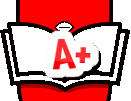JUNIOR INTERSESSION ASSIGNMENT
JUNIOR INTERSESSION ASSIGNMENT
Economic Conditions Applied to Lone Star National Bank
JUNIOR INTERSESSION ASSIGNMENT #1
Due September 1, 2016
ECONOMIC CONDITIONS APPLIED TO YOUR BANK
We recommend that you look over the Second Problem,“EVALUATION OF CURRENT
BANK PERFORMANCE AND PLANNING THE FUTURE,” which is due December 1, 2016, before
completing this assignment. You will notice that this problem and the second Junior problem are related.
This is by design; it is not a mistake.
General Introduction: Please read
It is imperative that you read all of these instructions, especially the Points of Consideration,
before you begin. You will save yourself a lot of time and significantly improve your grade on
the paper. All too often, those who receive a grade below what they expected just did not follow
these instructions, especially those related to format. A couple of points to consider before you
get started:
Economic Conditions Applied to Lone Star National Bank
Copy and pasting chunks of text off various websites is plagiarism. Plagiarism is actually pretty
easy to detect with today’s modern paper search systems. Just don’t do it, it will result in a grade
of zero or worse. Cite your sources and give credit where is due.
All direct quotes should be put in quotations marks or set off in italics and footnoted. The use of
direct quotes should be limited and only used to makea relevant point. Generally speaking, most
papers should have less than 2 or 3 direct quotes.
The style guide is VERY specific about how tables are to be formatted and how the paper should
be laid out. Every year, there many who just ignored the style guide entirely and are upset later
when the grade is not what they were expecting.
Read over your paper before you turn it in, or get someone to read over it for you. If the grammar
is so bad that it hinders the graders understanding of what the paper is trying to say, then the
paper will receive a low mark.
Don’t just “throw” in a graph or table for no apparent reason. Make sure they have a purpose in
the paper, are explained in the body of the paper and aren’t just there to “bulk” up the paper’s
page count.
Report Overview
The objective of this report is for SWGSB participants to become familiar with collecting and
interpreting economic data and using this information to make objective business decisions on
the future direction of their institution. Moreimportantly, we want SWGSB participants to
SW Graduate School of Banking
Southern Methodist University
Economic Conditions Applied to Lone Star National Bank
JUNIOR INTERSESSION ASSIGNMENT #1Page 2 of 7
develop a snapshot of the current economic conditions and how these conditions impact their
community bank (or financial institution). Fromthis information, they should then derive a
short-run and long-run forecast of the economy, which is then applied to the student’s specific
financial institution. In the end, students make recommendations, based on their analysis, to the
board of directors to help prepare their bank for the changing economy.
Report Format
Students should use the following outline as a guide for their report.
1. Title Page
2. Table of Contents
3. Introduction
4. Macroeconomic Snapshot and Forecasts
5. Economic Conditions Applied
6. Conclusion
7. References
General formatting: standard margins, double spaced, size 12 font (Times New Roman), and
include page numbers. **Reports should not exceed 35 pages**If your paper is significantly
over this recommendation, you should work to make your report more concise. See the Section
below “Important Writing Style Considerations” for more detailed discussion.
1. Title Page
The title page includes the report title, student’s name, class number, completion date, as well as
the name and location of the financial institution.
2. Table of Contents
The table of contents provides the reader with a guide to different sections of the report and
includes headings and page numbers.
3. Introduction
The introduction serves to entice the reader’sinterest and provide the necessary background
information. More importantly, the introduction should offer the reader a general outline of the
report.
4. Macroeconomic Snapshot and Forecasts
The objective of this section is to provide the reader with a general understanding of the present
economic conditions. For this section of the report, you will need to collect key macroeconomic
data from a variety of different sources. Macroeconomics studies economic activity at the
aggregate level – consumption, investment, government spending, taxes, trade (exports and
imports), unemployment, inflation, output (growth), interest rates, money supply, and much
more. Moreover, a comprehensive macroeconomic snapshot needs to examine the state of Fiscal
Policy, Monetary Policy, and Bank Regulatory changes.
SW Graduate School of Banking
Southern Methodist University
JUNIOR INTERSESSION ASSIGNMENT #1Page 3 of 7
Keep the following in mind when writing this section of the report. First, the economic snapshot
of data needs to all come from the same period – e.g. all data should be asrecent as possible (an
apples to apples comparison). Second, the report needs to provide a concise, to the point,
snapshot that summarizes the data – avoid large tables and graphs of historical data. Third, the
report needs to address current Fiscal and Monetary policies, as well as regulatory reform (i.e.
Dodd-Frank, etc.).
You need to provide a short-run (18 months) and a long-run (5 year) forecast for the economy.
The quality of your forecast will depend upon the supporting evidence for your research. These
forecasts are essential for making recommendations to the board of directors.
**It is important that you do not just write a series of essays on the economy. Always keep
in mind that this analysis is to assist you ingaining insight as to the impact the economy
has had, or will have, upon your institution. Summarize the impact the economy has, or is
having, on your institution.**
5. Economic Conditions Applied
In this section, you should describe how the current economic conditions have impacted your
financial institution and how the changing economy (based on the short-run and long-run
forecasts) will affect their financial institution going forward. In other words, connect the
macroeconomic snapshot and forecasts to the bank’s key business drivers, profitability, and risk
factors. To accomplish this task, you will want to explore and examine your institutions for the
most recent year end datafrom the Uniform Banking Performance Report in conjunction with
the economic data. In summary, the objective isto demonstrate the connection between your
economic analysis and your institutions profitability, risk factors, and key business drivers.
In this section it is most critical that you identify the bank’s key business drivers, profitability
and risk factors and how the macroeconomic economic outlook is impacting them. You should
supplement your macroeconomic economic outlook with state and local conditions to the extent
you think there is a significant different outlook from the macroeconomic indicators. You may
want to take into consideration the effect ofthe varying economic conditions across different
geographical regions (global, national, state and local) pertaining to the key business drivers of
your institution.
As you connect the economic analysis and forecasts to the bank’s key business drivers and risk
factors, would you say the economy will have major or minor impact on the financial
performance of your bank over the next 18 monthsto 5 years? Why? What other factors
(beyond the economy) might significantly influence your financial institution?
Finally, you should make recommendations to the board of directors to help better prepare the
bank to cope with the changing economy. These recommendations should be well founded and
supported by your previous research and conclusions.
SW Graduate School of Banking
Southern Methodist University
JUNIOR INTERSESSION ASSIGNMENT #1Page 4 of 7
6. Conclusion
The conclusion summarizes the objective and highlights the major findings in the report. In sum,
you need to highlight the major takeaways from the report. This can be accomplished by writing
clear and concise sentences that are written in a more general tone.
Points of Consideration
Grading Criteria
1. Quality and Quantity of research and integration within the report is critical.
2. Quality of tables, charts, graphs and figures. Be sure the tables are needed and used in
the report
3. Macroeconomic Snapshot and Forecasts
4. Economic Conditions Applied to Your Institution
5. Ability to focus on the important material (Do not add fluff to the report)
6. Writing quality (grammar, spelling, etc.) and format (too much or too little white space)
7. Professionalism of the report
Important Writing Style Considerations
We realize that it might have been a few years since you wrote a formal research oriented paper.
The following section should give you critical guidance on the style of this report. You should
carefully read over the following:
Plagiarism will result in a zero for the assignment. Make sure to always give credit
where credit is due.
The report is written to an informed reader, which means that you do not need to fill the
report with long definitions.
Acronyms need to be spelled out at least the first time used in the report, e.g. Gross
National Product (GDP).
The report length is important.High quality reports will range from 25 to 35 pages,
double spaced. It is not possible to complete the assignment in fewer pages, nor is it
possible to complete the assignment with little or no research.
The report should include tables, charts and a variety of graphs. But these tables, charts
and graphs must be used, or explained in the paper, or you will not receive credit for
them. Charts and graphs are not a substitute for writing or just a way to “fill the page!”
Tables, charts and graphs should be stand alone, which means that they need a
descriptive title and enough information for the reader to understand the table or
graph without reading the report. See the example below.
SW Graduate School of Banking
Southern Methodist University
JUNIOR INTERSESSION ASSIGNMENT #1Page 5 of 7
Be selective on the tables and figures that are included in the report and make sure to
highlight the important findings for the reader.
Keep good records and copies of all the documents, articles and figures used in the
report.
Rootnote items used to support your claims (whether it is directly quoted or paraphrased).
Failure to do so with result in either a grade of zero assigned for plagiarism or at a
minimum a lower grade because the grader cannot give credit to sources that are not cited
An excessive use of quotes is frowned upon;the report needs to be your own work,
backed by research.
High quality reports will reference 30 or more sources of which some are not Internet
sources. You know that thingwith the books in it called a library! Just FYI, Wikipedia,
ehow, ask.com, etc. are not credible sources and will devalue your paper.The
quality of the citation is important. References from a variety of sources are graded
higher than many citations from one source.
List of Sources
The following is a list of sources to which everyone should have access to understand the
macroeconomic scene. Be sure to consult the economic websites on the SWGSB student login
as well. This list is only a starting point. Weexpect students to seek other sources. Do not use
Wikipedia, Investopedia or Blogs – these types of sources are not dependable.
1. The National Bureau of Economic Research
2. The Bureau of Labor Statistics
3. The Bureau of Economic Analysis
4. The Federal Reserve Board’s Beige Book,
5. The Federal Deposit Insurance Corporation (FDIC) Quarterly Banking Report
6. The Federal Deposit Insurance Corporation (FDIC) Regional Economic Conditions
7. The Federal Reserve Bank of St. Louis Research and Publications
8. International Monetary Fund Data, Publications and Research
9. The Wall Street Journal, Barron’s, Business Week, Forbes, Fortune, Kiplinger
Washington Letter, Kiplinger Agricultural Letter and local news papers
10. Time Magazine, Newsweek, U.S. News and World Report
11. The Economist, Financial Times, Financial Post, Business Times
See next page for an Example Figure
SW Graduate School of Banking
Southern Methodist University
JUNIOR INTERSESSION ASSIGNMENT #1Page 6 of 7
Example Figure
You should use the following example as a guide. Please notice that the following figure is self-contained, and is discussed in the text. It is not necessary that your title description be this long,
but it should describe what the figure is and whatit means without the reader reading having to
your paper. Recall, figures are visual imagesthat should enhance the readers understanding of
the report.
<<text>>
The National Bureau of Economic Research (NBER)maintains a chronology of the United States
business cycles. The NBER dates both the peaks and the troughs in economic activity. The classic
economic definition for a recession states that a recession is when we experience two consecutive fiscal
quarters where real GDP growth declines. However,the NBER defines a recession as a period between a
peak and a trough, and an expansion as the period between a trough and a peak. The following graph
shows a general business cycle.
<<Text continued…>>
This graph shows that generally economic growth has an upward trend, which means that in the long-run
the economy is growing. In reality, economic growthdoes not occur on a linear growth path. Instead,
our economy is faced with ups and downs (recessions and expansions) in growth. We would like to point
out two important caveats. First, the term cycle can be very misleading because a cycle implies a
symmetric pattern between the upward and downward fluctuations in economic growth. The economic
data indicate that the upward fluctuations in growth, on average, are much longer than the downward
fluctuations. Second, no two business cycles have ever been alike. Some cycles (from peak to peak) have
been relatively short, e.g., the 2001 recession, while others have been relatively long, e.g., the Great
Figure 1: The Business Cycle.The long-run economic growth trend is upward sloping. However, the economy
experiences fluctuations in the short-run. The highest point in the cycle is the peak followed by a recession to a
trough. The bottoming out of the economic growth is followed by a recovery (or expansion) back to another
peak. Source: McConnell, Brue, and Flynn. Macroeconomics.Eighteenth Edition. 2009.
SW Graduate School of Banking
Southern Methodist University
JUNIOR INTERSESSION ASSIGNMENT #1Page 7 of 7
Depression. The NBER states that in both recessions and expansions, brief reversals in economic activity
may occur.










